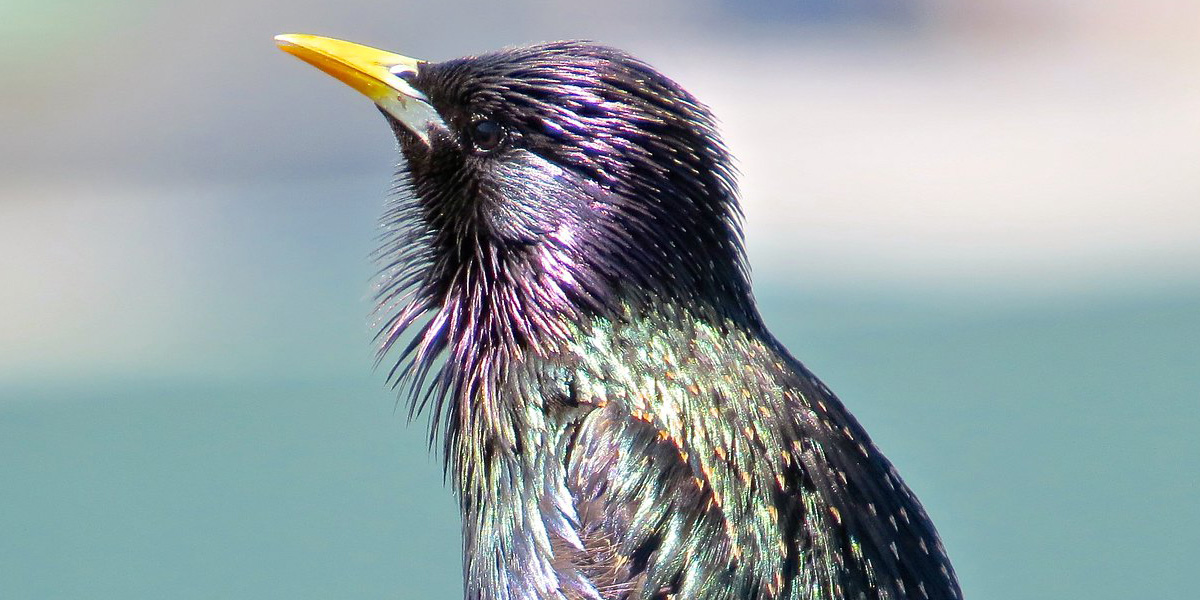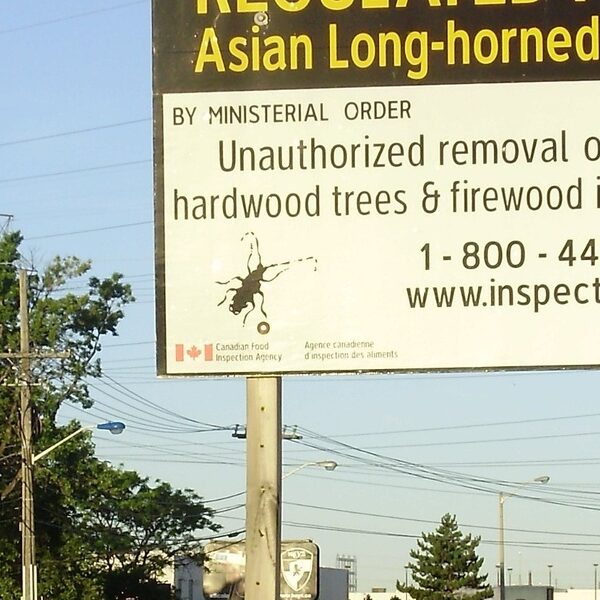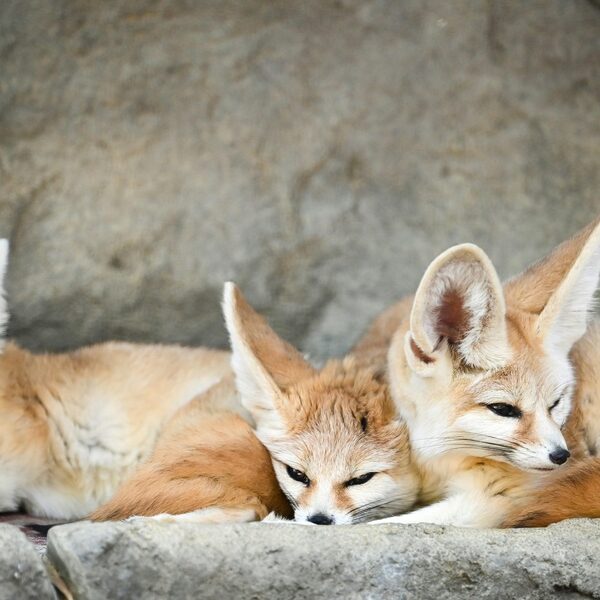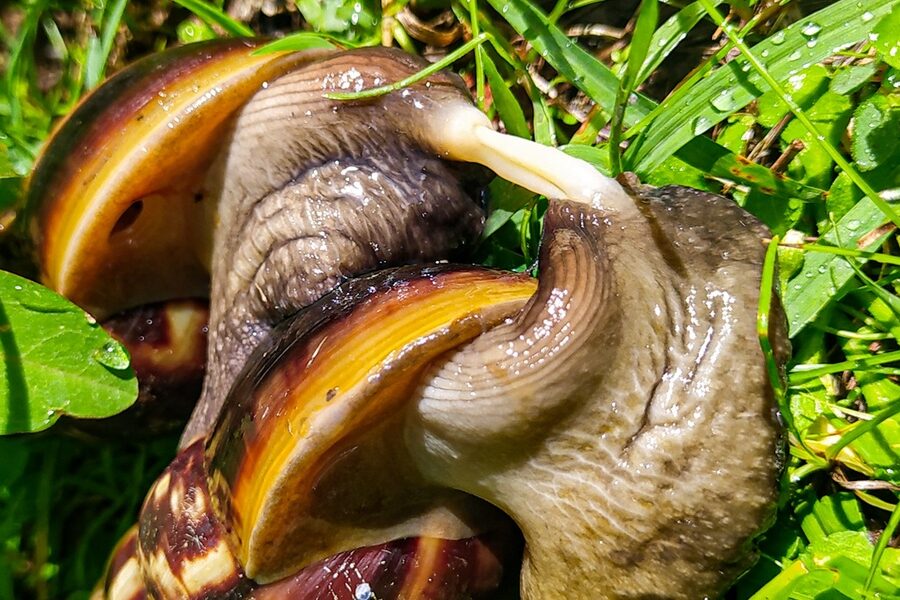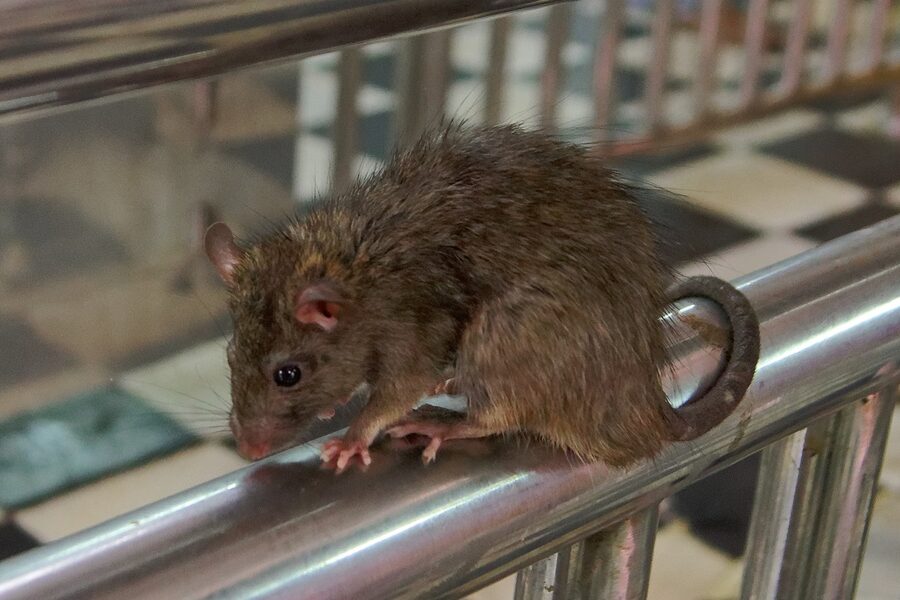Yellowstone National Park is a jewel of biodiversity, a vast ecosystem where native flora and fauna thrive in a delicate balance. However, like many protected areas worldwide, it faces persistent threats from species introduced from outside its natural range. These unwelcome newcomers can outcompete native life, alter habitats, and disrupt the intricate food web that defines this iconic landscape.
Understanding these threats is crucial for conservation. This comprehensive guide details the 19 Invasive Species in Yellowstone, ranging from aquatic inhabitants like the Brook Trout to terrestrial plants such as Yellow Toadflax. For each entry, you’ll find below key details including its Scientific Name, Native Region, Primary Ecological Impact, and the Key Management Strategies employed to combat its spread.
What makes a species “invasive” rather than just non-native in Yellowstone?
A non-native species is simply one introduced outside its natural range. An invasive species, however, is a non-native organism whose introduction causes or is likely to cause economic or environmental harm, or harm to human health. In Yellowstone, this means species that outcompete native plants and animals, degrade habitats, alter natural processes like fire regimes, or reduce biodiversity, thereby threatening the park’s ecological integrity.
How does Yellowstone National Park typically manage these invasive species?
Yellowstone employs a multi-faceted approach to manage invasive species, which often includes early detection and rapid response to new threats, manual removal (like pulling weeds or trapping fish), biological controls, and targeted herbicide application when necessary. Education and public awareness are also vital components, encouraging visitors to prevent accidental spread and understand the importance of protecting the park’s native ecosystems.
Invasive Species in Yellowstone
| Common Name | Scientific Name | Native Region | Primary Ecological Impact | Key Management Strategies |
|---|---|---|---|---|
| Lake Trout | Salvelinus namaycush | Northern North America (not Yellowstone Lake) | Preys on native Yellowstone Cutthroat Trout, disrupting the food web for bears, otters, and eagles. | Intensive gillnetting, angler harvest incentives, and suppression of spawning success. |
| Spotted Knapweed | Centaurea stoebe | Europe and Asia | Outcompetes native plants, reduces forage for wildlife, and releases chemicals into the soil that inhibit other plant growth. | Targeted herbicide application, biological control (insects that feed on the plant), and manual removal. |
| Cheatgrass | Bromus tectorum | Europe, southwestern Asia, northern Africa | Alters the natural fire cycle by drying out early and creating a continuous fuel source, leading to more frequent and larger wildfires. | Herbicide application in critical areas, promoting native plant restoration, and managing fire to favor native species. |
| Canada Thistle | Cirsium arvense | Europe and northern Asia | Forms dense, spiny colonies that displace native vegetation and reduce wildlife forage. Its extensive root system makes it extremely difficult to control. | Integrated pest management including herbicides, mowing to prevent seed production, and biological control agents like the thistle weevil. |
| Whirling Disease | Myxobolus cerebralis | Europe | A microscopic parasite that infects young trout, causing skeletal deformities and neurological damage, leading to a “whirling” swimming behavior and high mortality. | Monitoring fish populations, preventing the spread of the host worm, and developing disease-resistant cutthroat trout stocks. |
| New Zealand Mudsnail | Potamopyrgus antipodarum | New Zealand | Forms incredibly dense populations (up to 750,000 per square meter) that outcompete native aquatic insects, a primary food source for fish. | Public education (“Clean, Drain, Dry” gear), boat inspections, and research. Eradication is considered impossible once established. |
| Brook Trout | Salvelinus fontinalis | Eastern North America | Competes with and hybridizes with native cutthroat trout, displacing them from cold, clear streams and threatening their genetic purity. | Mechanical removal via electrofishing, installing fish barriers to protect native populations, and encouraging angler harvest. |
| Brown Trout | Salmo trutta | Europe and western Asia | An aggressive predator and competitor that displaces native cutthroat trout, particularly in the park’s larger, warmer rivers. | Not actively removed due to its sport-fish status, but its spread is monitored. Management focuses on protecting remaining cutthroat strongholds. |
| Rainbow Trout | Oncorhynchus mykiss | Pacific coast drainages of North America | Hybridizes with native Yellowstone cutthroat trout, creating “cutbows” that dilute the unique genetics of the park’s native trout subspecies. | Removal from key cutthroat spawning streams and using barriers to isolate genetically pure populations. |
| Dalmatian Toadflax | Linaria dalmatica | Mediterranean region | Forms dense patches that crowd out native plants, reducing forage for wildlife. Its waxy leaves make it resistant to many control methods. | Biological control (e.g., toadflax stem weevil), targeted herbicide use, and manual pulling for small infestations. |
| Oxeye Daisy | Leucanthemum vulgare | Europe and temperate Asia | Spreads rapidly in meadows, forming dense stands that displace native wildflowers and reduce forage quality for elk and bison. | Mowing before seed set, targeted herbicide application, and hand-pulling in sensitive areas. Grazing animals tend to avoid it. |
| Houndstongue | Cynoglossum officinale | Europe and Asia | Is toxic to wildlife and livestock if eaten and displaces native plants. Its bur-like seeds cling to the fur of animals, allowing it to spread over long distances. | Herbicide treatment is the most common control method, supplemented with biological control insects and mowing to prevent seed production. |
| European Starling | Sturnus vulgaris | Europe, Asia, North Africa | Aggressively competes with native cavity-nesting birds like bluebirds and woodpeckers for limited nesting sites, often evicting them from their nests. | Control is focused on developed areas and includes trapping and preventing access to nesting sites in buildings. Widespread eradication is not feasible. |
| Leafy Spurge | Euphorbia esula | Eurasia | A highly aggressive perennial that displaces native vegetation. Its roots can extend over 15 feet deep, and it exudes a milky sap that can irritate skin. | A combination of grazing by sheep and goats (who can eat it), biological control insects, and targeted herbicide application. |
| Yellow Toadflax | Linaria vulgaris | Europe and Asia | Similar to its relative Dalmatian Toadflax, it spreads aggressively through its root system, forming dense colonies that displace native grasses and forbs. | A combination of biological control insects, herbicide treatments, and manual removal where practical. |
| Common Mullein | Verbascum thapsus | Europe, northern Africa, and Asia | A biennial plant that can colonize disturbed areas quickly, producing thousands of seeds that can remain viable for decades, inhibiting native plant recovery. | Manual removal of individual plants before they set seed is the most effective strategy for controlling its spread in sensitive areas. |
| St. John’s Wort | Hypericum perforatum | Europe and Asia | Forms dense stands that reduce forage for wildlife and can be toxic to livestock if consumed in large quantities, causing photosensitivity. | Biological control, primarily using the Klamath weed beetle, has been very successful in controlling its spread, supplemented by herbicide use. |
| Scentless Chamomile | Tripleurospermum inodorum | Europe and Asia | An aggressive invader of disturbed areas, roadsides, and meadows, where it outcompetes native plants. A single plant can produce over 300,000 seeds. | Management includes mowing to prevent seed production and applying herbicides. Preventing soil disturbance is key to limiting its establishment. |
| Red-rimmed Melania | Melanoides tuberculata | Northern Africa and southern Asia | An aquatic snail that can reach high densities, potentially competing with native snails. It is also a host for parasites that can infect fish and birds. | Currently, management focuses on preventing its spread through public education about cleaning aquatic gear. No effective large-scale control methods exist. |
Images and Descriptions
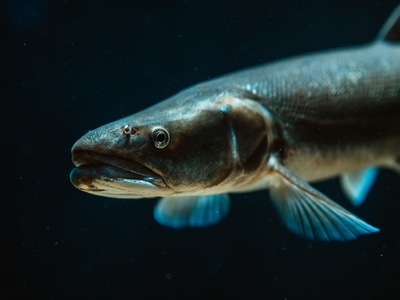
Lake Trout
A large, predatory cold-water fish illegally introduced to Yellowstone Lake in the 1990s. Its presence has caused a severe decline in the keystone cutthroat trout population.
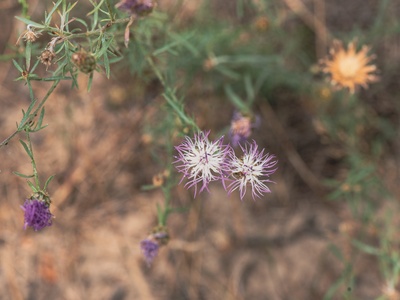
Spotted Knapweed
A perennial plant with thistle-like purple flowers. The bracts below the flower have black tips, giving it a distinct spotted appearance that helps with identification.
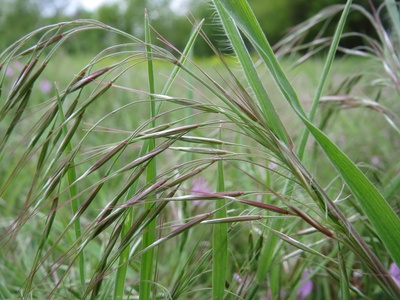
Cheatgrass
An annual grass that greens up early in spring and turns a purplish-red before drying to a light tan. Its drooping seed heads are a common sight along roadsides.
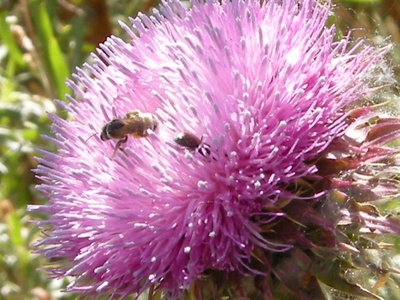
Canada Thistle
A prickly plant with small, purple or pinkish flower heads. Despite its name, this aggressive weed is not native to North America and spreads rapidly via roots and seeds.
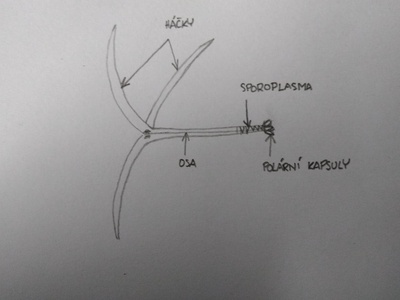
Whirling Disease
Not a species you can see, but a devastating parasite that attacks the cartilage of young fish, especially rainbow and cutthroat trout, making them vulnerable to predators.
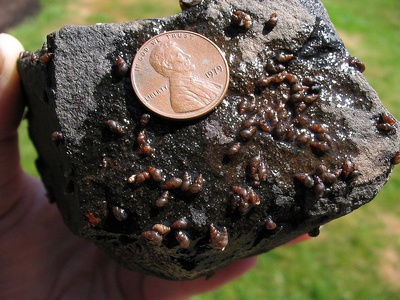
New Zealand Mudsnail
A tiny aquatic snail, usually less than 5 mm long, with a light to dark brown coiled shell. A single snail can start a new population as they reproduce asexually.
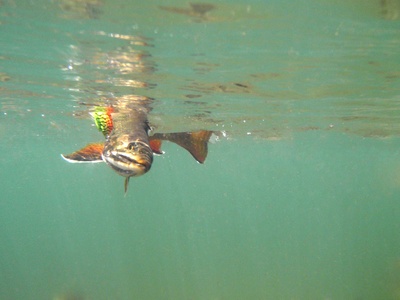
Brook Trout
A colorful fish of the char family, identified by a marbled worm-like pattern on its back and red spots with blue halos on its sides.
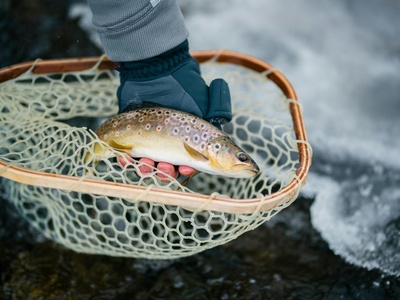
Brown Trout
A wary, golden-brown fish with large black and red spots on its sides. It was introduced in the late 1800s for sport fishing and is now well-established.
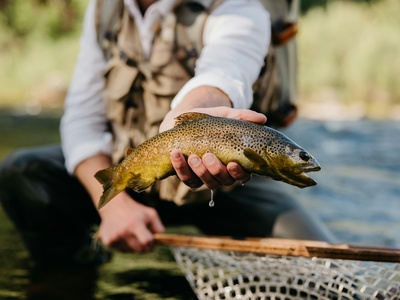
Rainbow Trout
Recognized by the broad, pinkish stripe along its sides. While native to North America, it is not native to Yellowstone’s watersheds east of the Continental Divide.
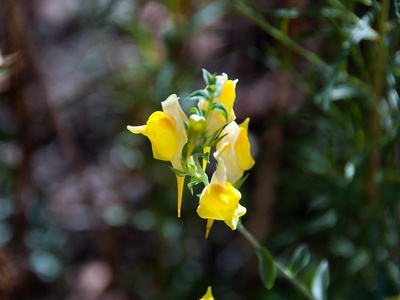
Dalmatian Toadflax
A perennial plant with waxy, heart-shaped leaves and bright yellow flowers that resemble snapdragons. It is a highly aggressive invader of roadsides and rangelands.
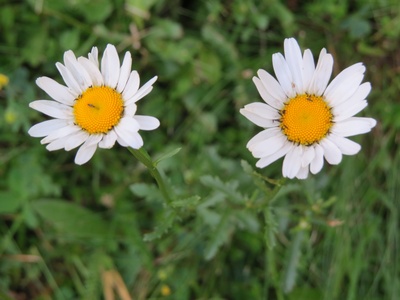
Oxeye Daisy
A familiar-looking daisy with a yellow center and white petals. While attractive, this escaped ornamental plant is an aggressive invader of natural areas.
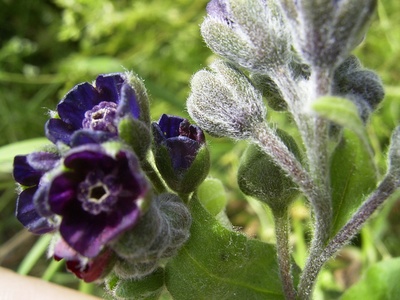
Houndstongue
A plant with broad, hairy, tongue-shaped leaves and reddish-purple flowers. Its Velcro-like seeds are a major nuisance and effective dispersal method.
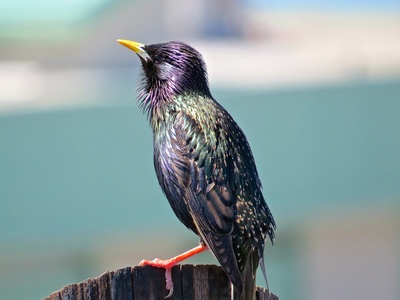
European Starling
A stocky, dark bird with a glossy, iridescent plumage and a short tail. Often seen in large, noisy flocks around human developments within the park.
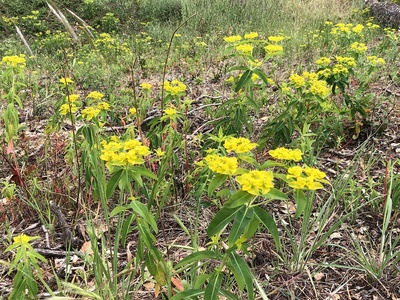
Leafy Spurge
A deep-rooted plant that grows up to 3 feet tall with yellowish-green flower-like bracts. It can quickly dominate grasslands and is very difficult to eradicate.
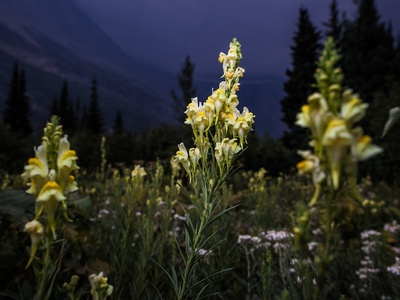
Yellow Toadflax
Often called “butter-and-eggs” for its bright yellow and orange flowers that resemble small snapdragons. It spreads both by seed and extensive creeping roots.
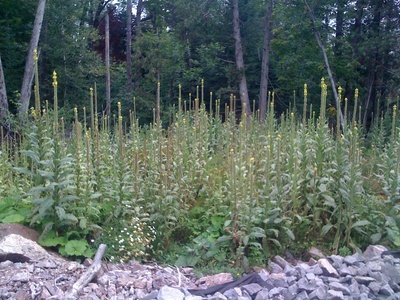
Common Mullein
Easily recognized by its tall flower stalk (up to 6 feet) and large, fuzzy, silver-green leaves that form a rosette in its first year.
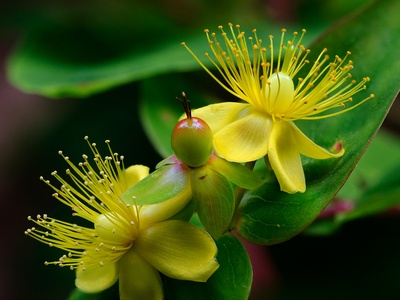
St. John’s Wort
A woody perennial with bright yellow, five-petaled flowers that have small black dots along the margins. When a leaf is held to the light, it appears perforated.
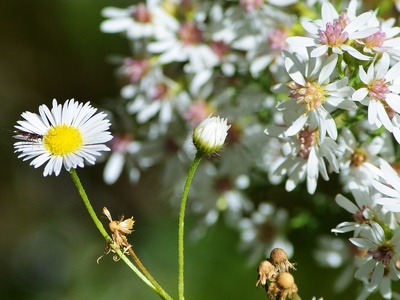
Scentless Chamomile
Looks very similar to a daisy or chamomile, with finely divided, fern-like leaves. As its name suggests, the leaves lack a distinct scent when crushed.
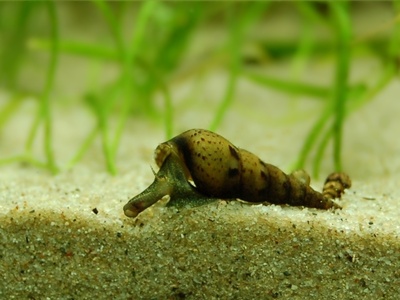
Red-rimmed Melania
A small freshwater snail with an elongated, cone-shaped shell that is typically light brown with reddish-brown spots. It is often found in geothermally influenced waters.
